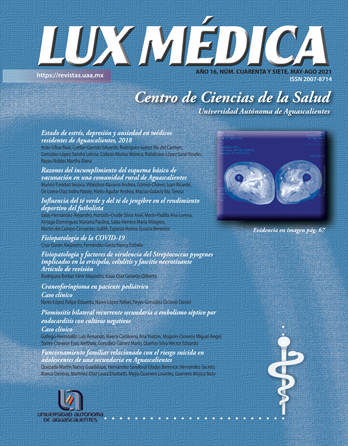Pathophysiology and virulence factors of Streptococcus pyogenes implicated in erysipelas, cellulitis, and necrotizing fasciitis
DOI:
https://doi.org/10.33064/47lm20213159Keywords:
Diabetes, Erysipela, Cellulitis, Necrotizing fasciitis, Streptococcal toxic shock syndrome, M protein, Streptokinase, SuperantigenAbstract
Without prompt treatment, Streptococcus skin lesions can endanger a person's life. In Mexico, these infections occur due to an increased number of patients with type 2 diabetes mellitus, which produces immunosuppression in the body. The bacteria's entry routes can range from ringworm of the feet, poor shaving to severe trauma. In the case of S. pyogenes, its manifestations can range from erysipelas or cellulitis to necrotizing fasciitis or streptococcal toxic shock syndrome. These lesions are related to the virulence factors of the bacterium that allow it to adhere to the epidermis (FN-BINDING, M protein), evade the immune system (Mac-1, Mac-2, EndoS, SpeB, capsule, ScrpA), and start a pathogenesis process (streptolysin O, streptolysin S, hyaluronidase, streptokinase, superantigens). This article aims to review the pathophysiology of the virulence factors of Streptococcus pyogenes, which generate skin lesions.
Downloads
Metrics
Downloads
Published
How to Cite
Issue
Section
License
La revista Lux Médica está bajo una licencia de Creative Commons Reconocimiento-NoComercial-Compartir Igual 4.0 Internacional.



















